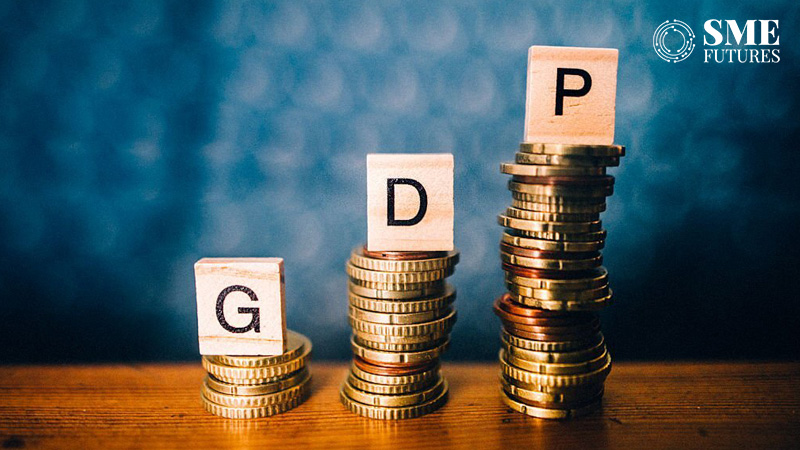Powered by a favourable base effect, India’s gross domestic product (GDP) grew 13.5 per cent in the first quarter of the current financial year (April-June) as compared to 4.1 per cent in the previous quarter, according to the official data released on Wednesday.
Though the Q1 growth was lower than the Reserve Bank of India‘s estimate of 16.2 per cent for the first quarter of 2022-23, it was the sharpest growth in the Indian economy in a year.
India’s real GDP with 2011-12 as the base is estimated to attain a level of Rs 36.85 lakh crore, as against Rs 32.46 lakh crore in the same quarter of 2021-22.
India’s real GDP or Gross Domestic Product (GDP) with 2011-12 as the base is estimated to attain a level of Rs 36.85 lakh crore, as against Rs 32.46 lakh crore in the same quarter of 2021-22. During the first quarter of 2021-22, the GDP was 20.1 per cent.
Following are some of the views from analysts and experts on the latest GDP data:
Nikhil Gupta, Chief Economist at MOFSL group says, “From a GDP perspective, private consumption grew much faster than expected, while the government consumption growth was lower, and investments were slightly higher. Notably, RBI expected 16 per cent growth in Q1, with 6.2/4.1/4 per cent growth in the subsequent quarters.
Assuming no change in Q2-Q4 projections, today’s Q1 data suggests that RBI’s FY23 growth forecast will be revised down to 6.7 per cent from 7.2 per cent earlier. We, on the other hand, have revised our forecast to 6.5 per cent, up from 6.3 per cent earlier.”
“Overall, it confirms that growth recovery is not so strong in India. It ideally implies that monetary tightening should be not very aggressive. However, it appears that the terminal repo rate will be 5.75-6 per cent in this cycle with 1-2 more rate hikes, ending the cycle in December,” he added.
The founder and CEO of Millwood Kane International, Nish Bhatt said, “An Investment consulting firm The Q1 GDP data at 13.5 per cent, a double-digit growth may optically look high. But it is lower than most estimates. This quarter was not affected at all by the pandemic. The lower than expected data is despite the private consumption. The contact-oriented services, hotel, and trade provided a boost to the overall data.”
“While it is encouraging to see growth in the agriculture output, the manufacturing segment was a big drag. The growth in the construction segment indicates higher demand for cement, steel, and other allied segments. A good monsoon may provide a boost to Q2 growth. Going forward, oil prices, geopolitical tensions between Russia-Ukraine, and a slowdown in the West will guide global growth,” he further adds.
Madhavi Arora, Lead Economist from Emkay Global Financial Services thinks, The GDP print for 1QFY23 was largely in line with our expectations, growing 13.5 per cent, led by led by a recovery in the services sector. The strong year-on-year growth partly also is led by a favourable base effect, as 1QFY22 growth was severely impacted by the Covid Delta wave.
“The GDP print was a mixed bag, largely a story of service sector rebound which also was visible in the private consumption print on the expenditure side. However, manufacturing has remained a disappointing print, while utilities have remained resilient since the pandemic normalized,” she added.











